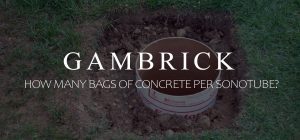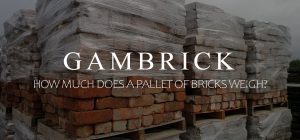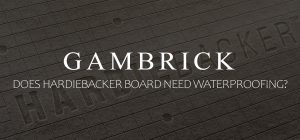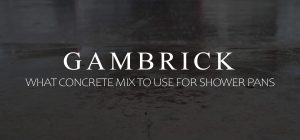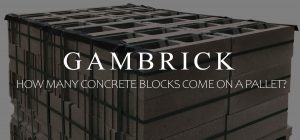
How Many Concrete Bags Equal A Yard
Concrete is made from cement, sand and aggregate that’s mixed with water. Once water is added, the dry ingredients harden and cure to form concrete. The strength of concrete is measured in pounds per square inch or psi. The psi of concrete is listed as a number on the bag. For example, a Quikrete bag that says 3500 means 3500 psi strength concrete. Ingredient ratios can be adjusted to make different strength concrete. Concrete is most commonly sold by the cubic yard, but it’s also available in pre-mixed bags like Quikrete or Sakrete. A yard of concrete is a measurement of volume and not weight or strength. One cubic yard is equal to the volume of a cube with edges that are one yard (three feet) in length. In general, about 90 x 40lb, 60 x 60lb, 75 x 50lb, or 45 x 80lb bags equal a yard of concrete.
Knowing how to calculate the amount of concrete you need is very important. There are online calculators that can do it for you but it’s good to know how to do it yourself.
Understanding how to properly mix Quikrete concrete is also very important. When done correctly, it’s just as strong as traditional concrete mixes.
Calculating how many bags of concrete per sonotube or for a slab is a little tricky. It’s both a square footage and a volume calculation. First, you have to figure out how many yards of concrete you need to pour the slab. Then you have to figure out how many bags of concrete that equals out to.
In this article, we’ll explain the entire process you’ll need to estimate how many concrete bags equal a yard.
Steps To Estimate Cubic Yards
The amount of concrete bags you need for a job is a measurement of volume, not weight or strength.
- Length x Width x Height. 3 Measurements are needed to calculate the volume of whatever your working on. Measure the length, width and height of the slab, footing, wall etc. that needs concrete. If the project is complex or if multiple pours are needed, break things down into smaller pieces. Calculate the concrete needed for each individual piece and then add them all up at the end.
- Convert Dimensions Into Feet. Conversion calculators make it easy to convert inches to feet, yards to feet or meters to feet. Unless of course your not working in the United States.
- Multiply. The formula to calculate volume is simple. W x L x H.
- Convert. Next convert cubic feet into cubic yards. This is simple too. Divide the cubic footage by 27 which gives you the cubic yards.
- Estimate Pre-Mixed Bags. On average it will take 90 40lb bags, 60 60lb bags, or 45 80lb bags to fill one cubic yard of concrete.
- Add 5%-10% additional material Always buys more concrete then you think you’ll need. This accounts for some waste or spills. It’s important to finish a concrete pour at one time before it sets and hardens.
Measuring Your Space
It’s just as important to know how many yards of concrete you need as it is to know how many concrete bags equal a yard.
To calculate this, you’ll need three numbers and a very simple calculation. Length x Width x Height. The length of the space you intend to fill, the width of that space, and the depth of the concrete. Remember, how many concrete bags of concrete equal a yard is a measurement of volume and square footage.
Another way of looking at is is calculating the square footage surface area times the depth. For example a 10×10 patio has a surface area of 100 sq. ft. But to calculate the amount of concrete you need, that 100 sq. ft. must be multiplied by the depth.
The first two measurements, length and width, are easy to figure out. But the third is harder because it depends on what and how your building. For example, that same 100 sq. ft. slab of concrete would probably be 4″ thick if it were a patio but 6-8″ thick if it were a driveway. That could require twice as many concrete bags.
Once you have all your numbers, convert them into inches. This will make the math easier.
Next, multiply the width x length x depth of the space that you want to fill with concrete. When you’ve got your answer, it will be in cubic inches.
Finally, divide the number that you came up with by 46,656 which gives you the cubic yards. When you know how many yards of concrete there is to fill it’s easy to figure out how many bags of concrete you need.
How Many Bags Of Concrete Are In A Yard?
Premixed bags of concrete are great for small to medium sized projects. Quikrete come in 40 pound, 50 pound, 60 pound or 80 pound bags in a variety of strengths and mixes. Mixing bags on site is easy with basic tools like a tray, wheel barrow, hoe and shovel. Or you can use a powered cement mixer.
The great thing about pre-mixed bags is that you can buy almost exactly what you need with very little waste. Buying a concrete truck can be expensive, especially if you don’t need a whole truck because most companies have small delivery charges.
Calculating how many bags you need is easy if you use the chart below. First, figure out the amount of concrete you need. Then the size Quikrete bag you want to use. The chart will tell you how many bags you need to make a yard of concrete broken down by bag size.
| Bag Size | 1/4 cu yd | 1/2 cu yd | 3/4 cu yd | 1 cu yd |
|---|---|---|---|---|
| 40 lb bags | 23 | 45 | 68 | 90 |
| 50 lb bags | 18 | 36 | 54 | 75 |
| 60 lb bags | 15 | 30 | 45 | 60 |
| 80 lb bags | 14 | 25 | 36 | 45 |
It takes quite a few bags of concrete to equal a cubic yard. The number of bags you’ll need will vary depending on the weight of the bag.
- 90 Bags of 40 lb concrete make a yard of concrete.
- 75 Bags of 50 lb concrete make a yard or concrete.
- 60 Bags of 60 lb concrete make a yard or concrete.
- 45 Bags of 80 lb concrete make a yard or concrete.
How Many 80lb Bags Of Concrete Are In A Yard?
80lb Quikrete is the most popular bag size of premixed concrete. You’ll need 45 bags of concrete mix to make a cubic yard of concrete.
An 80 lb bag (36.3 kg) of concrete mix yields approximately 0.60 cubic feet (17L) of concrete.
There’s 27 cubic feet of concrete in a cubic yard. If you divide 27 by .60 it equals 45 bags.
How Many Square Feet Of Concrete Per 80lb Bag?
The square footage of concrete that comes out of an 80lb bag depends on how thick the slab is. Remember that figuring how much concrete you need is both a volume and square footage calculation. The thicker the slab, the less area a bag of concrete will cover.
Here’s a breakdown of how much square footage you’ll get out of a typical 80lb bag of concrete based on the slab thickness:
| Slab Thickness 2 inch 4 inch 6 inch 8 inch | Coverage In Square Feet Per 80lb Bag 3.6 Square Feet 1.8 Square Feet 1.2 Square Feet 0.6 Square Feet |
As you can see, the thickness of the slab makes a big difference in determining the amount of coverage you’ll get out of an 80lb bag.
- 2″ thick 80 lb bag of concrete will provide 3.6 square feet of coverage
- 4″ thick 80 lb bag of concrete will provide 1.8 square feet of coverage
- 6″ thick 80 lb bag of concrete will provide 1.2 square feet of coverage
- 8″ thick 80 lb bag of concrete will provide 0.6 square feet of coverage
How Many 60lb Bags Of Concrete Are In A Yard?
Another popular size bag of concrete is 60lb. I use them a lot for smaller jobs. They’re easier to carry around the job and work just as well.
A 60 lb bag (27.2 kg) of concrete yields approximately .45 cubic feet (12.7L) of concrete.
There’s 27 cubic feet of concrete in a yard. If you divide 27 by .45 it equals 60 bags of concrete.
How Many Square Feet Of Concrete Per 60lb Bag?
The square footage of concrete that comes out of an 60lb bag depends on how thick the slab is. Remember that figuring how much concrete you need is both a volume and square footage calculation. The thicker the slab, the less area a bag of concrete will cover.
Here’s a breakdown of how much square footage you’ll get out of a typical 60lb bag of concrete based on the slab thickness:
| Slab Thickness 2 inch 4 inch 6 inch 8 inch | Coverage In Square Feet Per 60lb Bag 2.7 Square Feet 1.35 Square Feet 0.90 Square Feet 0.675 Square Feet |
As you can see, the thickness of the slab makes a big difference in determining the amount of coverage you’ll get out of an 60lb bag.
- 2″ thick 60 lb bag of concrete will provide 2.7 sq. ft. of coverage
- 4″ thick 60 lb bag of concrete will provide 1.35 sq. ft. of coverage
- 6″ thick 60 lb bag of concrete will provide 0.90 sq. ft. of coverage
- 8″ thick 60lb bag of concrete will provide 0.675 sq. ft. of coverage
How Many Square Feet Are In A Yard Of Concrete?
The amount of square feet you’ll get out of a yard of concrete depends on the slabs thickness.
Remember that calculating concrete is both a volume and a square footage calculation. A yard of concrete that’s spread 2 inches thick will cover a much larger area than if it’s poured 8 inches thick. The thicker the slab, the less square feet the concrete will cover.
| Slab Thickness 2 inch 4 inch 5 inch 6 inch 8 inch | Sq. Ft. Coverage per Yard Of Concrete 162 Square Feet 81 Square Feet 65 Square Feet 54 Square Feet 41 Square Feet |
As you can see, the thickness of the slab makes a big difference in determining the amount of coverage you’ll get from a yard of concrete.
- 2″ thick yard of concrete will cover 162 sq.ft.
- 4″ thick yard of concrete will cover 81 sq. ft.
- 5″ thick yard of concrete will cover 65 sq. ft.
- 6″ thick yard of concrete will cover 54 sq. ft.
- 8″ thick yard of concrete will cover 41 sq.ft.
How Much Water You Need Per Bag
The amount of water you need to mix each bag of concrete depends on the brand of concrete you’re using and the size of the bag.
Always check the manufacture’s recommendations on the back of the bag. Remember that this is just a guide.
Always add mixing water slowly. The consistency you’re going for is thick oatmeal. Grab some concrete and form it into a ball with your hand. If the ball holds form then it’s a good mix. However, if the concrete is too wet to hold or too dry to form, you need to adjust the water or ingredients. You either used too much or too little water if the consistency is off.
Below is a chart of approximately how much water you’ll need per bag.
| Bag Size | Minimum Amount Of Water pt (L) | Maximum Amount Of Water pt (L) |
| 80 lb bags | 6 (2.8) | 9 (4.3) |
| 60 lb bags | 4 (1.9) | 7 (3.3) |
| 40 lb bags | 3 (1.4) | 4.5 (2.1) |
How To Estimate Concrete Costs
Ready-mix concrete bags cost around $5 per 80 lb. bag. That works out to around $125 bucks per yard plus tax and delivery. Prices will vary based on the mix you use and where you buy it.
You should also calculate the cost of tools if you don’t have them already. Here’s a small list of what you’ll need.
- Mixing Tray: You’ll need something to mix the concrete in if your doing the work by hand. A mixing tray costs around $15.
- Wheelbarrow: You can mix in the wheelbarrow instead of a tray. I prefer it because it makes pouring the concrete into holes and footings easier. A decent wheelbarrow is around $50-$75.
- Power Mixer: You can rent one by the day for around $50. They make mixing concrete much easier but you still need a wheelbarrow to move the concrete around the job site.
- Hand Tools: Things like a shovel, how, trowel, edger, broom, float, etc. Buy basic concrete tools to suite the work your doing. You can buy everything you need for under $100.
| Total Price: | $125 – $150 per cu yd |
|---|---|
| 40 lb bags: | $2.50 – $5 per bag |
| 60 lb bags: | $3 – $6 per bag |
| 80 lb bags: | $4.50 – $7 per bag |
The national average total cost to build a concrete slab is $10 – $20 per square foot. Keep in mind that in addition to the cost of the concrete itself, there are also labor costs for preparing the area, pouring the concrete, and finish work. You can save a lot if your able to DIY a concrete project.
Get an estimate from a local mason for more accurate pricing because labor and materials costs are always changing.
The Weight Of Concrete
Concrete weighs about 150lbs per cubic foot. And one cubic yard is 27 cubic feet of concrete. That equals about 4,056 pounds per cubic yard. When you dive this number by the weight of your bag it gives you a rough idea of how many concrete bags equal a yard. For example 4,056 divided by 80 equals 50.7.
This isn’t totally accurate because the concrete bag is measured in dry weight and not mixed weight. When you mix concrete you add water and that water has weight. But it’s still a good way to calculate a rough number of bags.
Round up whenever you get a fraction or decimal number. It’s more important to complete the job in a single pour than it is to get exactly the right amount of bags.
Always buy a bit more concrete than you think you’ll need. I like to add 10%.
Summary: How Many Concrete Bags Equal A Yard
Concrete is made from cement, sand and aggregate that’s mixed with water. Once water is added, the dry ingredients harden and cure to form concrete. The strength of concrete is measured in pounds per square inch or psi. The psi of concrete is listed as a number on the bag. For example, a Quikrete bag that says 3500 means 3500 psi strength concrete. Ingredient ratios can be adjusted to make different strength concrete. Concrete is most commonly sold by the cubic yard, but it’s also available in pre-mixed bags like Quikrete or Sakrete. A yard of concrete is a measurement of volume and not weight or strength. One cubic yard is equal to the volume of a cube with edges that are one yard (three feet) in length. In general, about 90 x 40lb bags, 60 x 60lb bags, or 45 x 80lb concrete bags equal a yard or concrete.
Knowing how to calculate the amount of concrete you need is very important. There are lots of online calculators that can do it for you but it’s still good to know how to do it yourself just in case.
Calculating the amount of concrete you need for a slab is a little tricky. It’s both a square footage and a volume calculation. First you have to figure out how many yards of concrete you need to pour the slab. Then you have to figure out how many bags of concrete that equals out to.
If you have any questions or comments e-mail us any time. We’d love to hear from you.

John Mazzuca | About | More Posts |
Custom Home Builder
John Mazzuca is a custom home designer and builder at Gambrick with over 25 years experience in the construction industry. John has designed, built and/or remodeled hundreds of homes, small buildings, and commercial projects. He writes about business, real estate, home building, and household electronics. His work has been featured in Fox Business, Better Homes & Garden, House Beautiful, and more.


